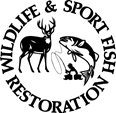Lake Pinkston 2023 Survey Report
If you have difficulty accessing the information in this document, contact the TPWD Inland Fisheries Division for assistance.
Lake Pinkston - 2023 Survey Report
Prepared by Dan Ashe and Brian Metz
Inland Fisheries Division – Jasper District
This is the authors' summary from a 30-page report. For a copy of the complete report, use the download link in the sidebar.
Fish populations in Pinkston Reservoir were surveyed in 2021 and 2023 using electrofishing. Anglers were surveyed from March through May 2022 with a creel survey. Historical data are presented with the 2022-2023 data for comparison. This report summarizes the results of the surveys and contains a management plan for the reservoir based on those findings.
Reservoir Description
Pinkston Reservoir is an impoundment of Sandy Creek, a tributary of the Attoyac Bayou in the Neches River Basin. The City of Center is the controlling authority. Primary uses are water supply and recreation. This reservoir has a surface area of 447 acres at conservation pool (300 feet above mean sea level), a shoreline length of 4 miles, and an average depth of 20 feet. Water level fluctuations average 1 - 3 feet annually. Boat access is available via two boat ramps in poor condition. Bank access is limited to areas around the public boat ramps and the dam.
Management History
Largemouth Bass are the primary sportfish. The 14- to 18-inch slot-length limit for Largemouth Bass (implemented in 1991) was changed to a 14- to 21-inch slot-length limit in 2001. Prior to 2000, hydrilla had been problematic, and coverage exceeded 50% of the reservoir surface area. In 1997, the City of Center stocked triploid Grass Carp at a rate of 7 fish/vegetated acre (2,100 fish total) in an attempt to reduce hydrilla coverage to 30%. Since 2000, hydrilla coverage has varied considerably (range = 2 - 255 acres). Giant salvinia was found in the reservoir in 2006 and successfully eradicated. Giant salvinia was found again in 2021 and again 2022 and was successfully eradicated.
Fish Community
- Prey species: Gizzard Shad and Threadfin Shad were the most abundant prey species and provided ample forage for sport fish.
- Largemouth Bass: Largemouth Bass were abundant. Size structure has remained consistent over the last three survey years with a high abundance of fish within the protective slot length limit. Largemouth Bass had desirable growth rates and were in average body condition. Most anglers fished for Largemouth Bass, with high success, and no harvest was observed.
- Crappie: Anecdotal information indicated that the crappie fishery has historically been cyclical but productive during some years. Moderate angling effort was observed during the spring 2022 creel survey. With fair catch rates reported by anglers. No harvest was observed.
Management Strategies
- Continue to manage Largemouth Bass with 14- to 21-inch slot-length limit. In 2024, explore angler opinion regarding a potential change to a 16-inch maximum length limit. Manage lakeside homeowners access through the TPWD-approved Aquatic Vegetation Treatment Proposal process. Continue to inform the City of Center of funding opportunities from the Boating Access Program for boat ramp improvements.

Performance Report as required by Federal Aid in Sport Fish Restoration Act Texas Federal Aid Project F-221-M-6 Inland Fisheries Division Monitoring and Management Program